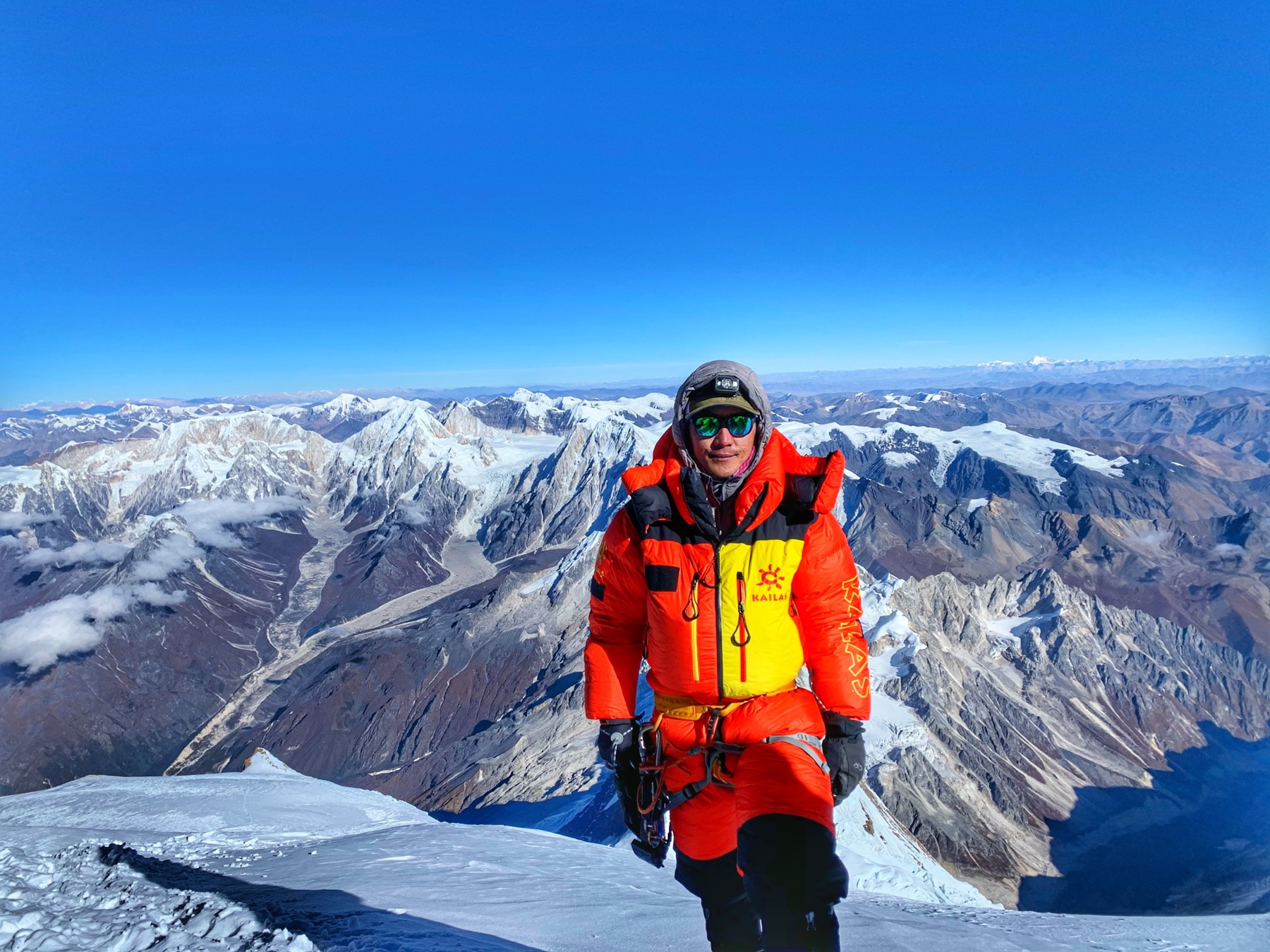0%

Lakpa Dendi Sherpa all set to conquer the mountain peak.
KATHMANDU: Visualizing a Sherpa is to reminiscence the golden words of Sir Edmund Hillary: “The Sherpas play a very important role in most mountaineering expeditions, and in fact, many of them lead along the ridges and up to the summit.”
Truly, said. Hillary, who became the first climber along with Tenzing Norgay, to step onto the summit of Mount Everest on May 29, 1953, substantiates Sherpa’s importance when it comes to mountains and mountaineering.
But incongruously, the future of the Sherpas who spend sweat, blood, and their golden age for the mountains have, actually, no secured retired life.
This haunts Lakpa Dendi Sherpa, 33, who hails from Mahakulung-3, Solukhumbu. He has scaled different summits above 8000 meters 23 times as he foresees a painful, insecure retired life.
Sad but true, due to the lack of apathy on the part of the government and various organizations, a significant number of mountaineers like Lakpa Dendi are languishing at their homes without a secured future.
And yes, they are worried!
“Unfortunately, several amateur mountaineers have settled abroad for a secured future,” Lakpa laments.

He has more to complain: “If the government, concerned bodies and organizations, and expedition companies are least bothered about the future of Sherpas, there can be lack of Sherpas and other mountaineering guides in the future.”
Each year, the government collects a large amount of money as royalty from the mountains but is reluctant to formulate any good policies for the Sherpas, who have been contributing to the state coffer, Lakpa quips.
The government has collected Rs 49.28 million in royalty from the mountaineers scaling different mountains during the autumn season in 2019 alone.
Even during the post-Covid period, Nepal has collected revenue of more than Rs 23 million from the autumn climbing permits issued in 2021. Autumn is considered an ideal season for climbing after the Spring season.

This “frustrated” Lakpa was fascinated with the mountains at the early age of 13 when he reached the Everest Base Camp and dreamt to reach the summit of the world’s highest peak. Mountaineering was his passion. Initially, he climbed the 6000-meter Island Peak in Solukhumbu to fulfill his passion.
After climbing several 6000s meter peaks from 2008, he underwent training on mountaineering and started climbing mountains higher than 8000 meters.
Lakpa wanted to try Mt Everest and reached the Everest Base Camp in 2015. Unfortunately, he failed to scale it due to the 2015 devastating earthquake.
After a year, in 2016, he gave a second try and fulfilled his aim.
“When I reached the top of the world, I was overwhelmed and could not stop my tears due to extreme happiness,” he says while sharing his first experience of reaching the summit of Everest. Since then he is unstoppable.
He has climbed Mt Everest seven times so far. In the year 2018, he climbed Mt Everest three times in the spring season.
He booked his name in the Guinness World record as the fastest time climber for scaling Mt Everest three times in 10 days 18 hours 30 minutes, who made all of his ascents from the base camp to the summit on 13, 18, and 24 May 2018.

Lakpa’s first climb to Everest was made to fix ropes, and the other two were climbs with clients, all using bottled oxygen.
“Mountaineering is our profession and love to explore new mountains,” he says, adding, “Doing hard work in any profession can always be rewarding.”
Lakpa, who is also a brand ambassador for German clothing brand Vaude, has plans to make many new records in the future.
Apart from Mt Everest, he scaled Mt Manaslu, K2 (2017, 2018), Nanga Parbat, and others and has a dream to ascend 14 peaks above 8000s meters.
Lakpa climbed Mt Everest in 2017 from the South Pole without oxygen after his client’s mask regulators broke down.
Apart from this, he climbed Nanga Parbat and Manaslu. In 2020, he took a challenge by staying at the peak of Mt Manaslu for 5 hours without oxygen.
That is not all. He was also entrusted with the task of taking pictures of the team of Prince of Bahrain Shaikh Nasser bin Hamad Al Khalifa. The team consisted of 15 Bahrainis and three British nationals.
“Climbing is our profession, we do our job sincerely and do not run after name and fame,” he says adding that tourists come here for name and fame investing money.

One might be wrong to say that Lakpa is dissatisfied with his profession. “No, I am not,” he says hastening to add, “I am highly enthusiastic.”
Therefore, despite all his frustrations, he canceled his trip abroad despite getting a visa.
“I sensed the mountains were beckoning me. I then dropped my plan of flying abroad and continued to chase my dreams in the mountains, which has given me the fame,” Lakpa says with a broad smile on his face.
While saying so, he elucidates his “exciting experience” when he steps on the top of a summit: “The sense of satisfaction and excitement you get after reaching to the top is inimitable.”
That’s not all. He is trying to add one more feather to his cap by writing a book (English and Nepali) on mountaineering encompassing his good and bad experiences, which he plans to publish in 2023.

“A good mountaineer is usually a sagacious mountaineer, but due to carelessness, problems of mask regulators, ill-timing, walking speed and some unavoidable weather conditions lead to disasters, including death,” he says.
For Lakpa, mountains are everything for them as they have become the means of their earning besides name and fame. “In fact, mountains are our God.”
Due to his enthusiasm to do better, he has been involved in several professional and social organizations like the Nepal Mountaineering Association, Lions Club of Save Himalaya, and Kulung Sherpa Society.